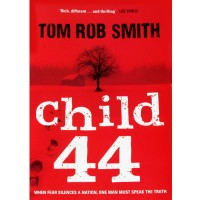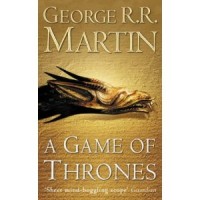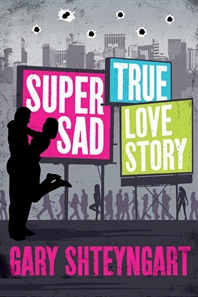Blog Archives
The New Yorker Five
The US contingent of the festival kicked off last night with an evening with The New Yorker 5: cartoonist Roz Chast, art critic Peter Schjeldahl, staff writer David Grann, and music critic Sascha Frere-Jones, hosted by the magazine’s Edtorial Director Henry Finder.
The night promised to deliver recollections and behind the scenes insights into the highly regarded magazine, now available pretty much anywhere you can find a powerpoint.
Being a reader of the The New Yorker (hereafter TNY) myself, I could definitely sense a feeling of shared excitement in the cavernous Town Hall. Anticipation that what that these writers from abroad had to say was bound to be insightful and important, even before they started to speak.
As the panelists fund their chairs, I recalled a letter from Australia published by LA Review of Books last month that read “Like do you guys get how hard we are trying to impress you?”
The letter was written by Sydney writer Sam Twyford Moore, and asks what we’ve all wanted to ask but never could with such intelligence and precision: why does American opinion mean so much to the views of Australians and the careers of Australian writers?
Later in the session, when each of the writers were asked to respond to questions from the audience, Editorial Director Henry Finder addressed part of Sam’s question indirectly when asked why Australian’s cared for TNY.
Finder suggested that with much of the magazine’s audience now based outside of its home town, TNY stood for less of a geographic concern, and more for set of common values; of journalistic vigour, intelligence, humour and creativity.
The night revealed a TNY editorial structure of strict vertical departments, with each ‘vertical’ (such as music, art, nonfiction, fiction) guided by common standards of excellence and accuracy. Much that appears in today’s TNY is months old, with some pieces the product of a year’s work, checked and re-checked by the magazine’s famous fact checking department.
This structure reflects my own reading habits of the magazine. Every reader is different, but I rarely read the commentary or criticism, I flip through the cartoons and bunker down in the glorious long form journalism, usually reading one to two pieces per edition.
I’m happy with this because one good article of TNY replaces a dozen or more average reads of a number of other information sources I draw from, online and off.
Long time New Yorker cartoonist Roz Chast revealed the inner machanisms that help ensure the magazine’s standards never slip. Chast submits six to eight cartoons a week to the editor, selling one to the magazine in a good week, but more often than not lucking out completely. There are over 40 contract cartoonists working on the magazine, each submitting a similar amount every week, plus a growing slush pile.
It is hard to get into TNY, even when you’re already ‘in’.
The stories of staff writer (and my current man-crush) David Grann are a perfect example of this uncertainty. He captivated the audience (or maybe it was just me) with the genesis of his 2004 Squid Hunter piece for the magazine, in which he failed to deliver on the original brief to document the successful capture of a giant squid.
Grann, who refined his journalistic knack for accuracy through writing obituaries, explained that not knowing where a story was going to end up had become a necessary part of finding a good story:
The endings we don’t expect are those that most captivate.
As each panelist went on to reveal their own conflicted relationship with writing, the session signed off with a view from art critic Peter Schjeldahl, explaining that writing for him was “hell”:
Just because you like sausages, doesn’t mean you want to see the sausages being made.
While I left the session with my views of TNY unchanged (I’ll still likely never read the commentary), I felt renewed respect for the writers, who ultimately bear the scars of the magazine’s high standards. My only disappointment was that we didn’t get a glimpse into what drives these writers to continue submitting, even when the ends remain unknown.
Belated reading and delayed writing: Child 44 and Game of Thrones
Hello again. It’s been a while, hasn’t it? But here we are again, this time pacing the boards in anticipation of MWF 2011. I’m very happy to be back here with Simon Keck and new MWF bloggers Jo Case and Stephanie Honor Convery; we’ll have an excellent time of it, I’m sure.
In the interim, I’ve been dividing my time between Oxford University Press, where I’m an editor; Kill Your Darlings, where I’m the Online Editor; writing about books here and there; and my online equivalent of a childhood house in the suburbs, 3000 BOOKS, where I try (with decreasing success) to record something about every book I read.
 I have less and less time to stick to the project these days, but it’s a good little system. On the one hand, while my untidy mind is likely to forget the details of a novel just read, or even a short story twice read, the internet never forgets. (Just try googling “Billy Joel demo tape”.) But on the other hand – and the other hand never has anything nice up its sleeve – it’s mortifying to realise how slowly I get through books, and to books. For example, only this year did I read Tom Rob Smith’s 2008 Booker-longlisted Child 44 (Smith was a MWF guest in 2009). The third book in his Cold War-era thriller series about secret police member Leo Demidov is coming out next month in the UK. So, while Smith has managed to write two follow-up books in the intervening years, I’ve only managed to read one of them. Luckily someone has their priorities straight.
I have less and less time to stick to the project these days, but it’s a good little system. On the one hand, while my untidy mind is likely to forget the details of a novel just read, or even a short story twice read, the internet never forgets. (Just try googling “Billy Joel demo tape”.) But on the other hand – and the other hand never has anything nice up its sleeve – it’s mortifying to realise how slowly I get through books, and to books. For example, only this year did I read Tom Rob Smith’s 2008 Booker-longlisted Child 44 (Smith was a MWF guest in 2009). The third book in his Cold War-era thriller series about secret police member Leo Demidov is coming out next month in the UK. So, while Smith has managed to write two follow-up books in the intervening years, I’ve only managed to read one of them. Luckily someone has their priorities straight.
Speaking of follow-up books, I was recently intrigued by Laura Miller’s piece in the New Yorker about George R. R. Martin, author of the medieval politics-meets-fantasy series A Song of Ice and Fire. Titled ‘Just Write It!’, Miller’s piece describes several groups in Martin’s large and passionate fanbase, one faction of which has taken against the author for not yet having delivered the fifth book in the series (Martin predicts that there will eventually be seven books in total). The fourth book, A Feast for Crows, was published in 2005.
That’s a pretty long wait. But of course, like a fool, I thought it would be a great idea to start reading the series regardless.  I’m now halfway through the second book, but I have no idea why I would torture myself with the prospect of a perpetual cliffhanger, particularly in a series noted for its complexity and non-traditional reward–morality ratio. (Martin has said that the fifth book will be published in July this year, and a television series based on the books may provide some relief should the book not materialise.) Even more a fool, I want to finish the book (a mere dash at 744 pages) before I hop on a plane for New York this Thursday.
I’m now halfway through the second book, but I have no idea why I would torture myself with the prospect of a perpetual cliffhanger, particularly in a series noted for its complexity and non-traditional reward–morality ratio. (Martin has said that the fifth book will be published in July this year, and a television series based on the books may provide some relief should the book not materialise.) Even more a fool, I want to finish the book (a mere dash at 744 pages) before I hop on a plane for New York this Thursday.
Anyhow, we’ll see how that goes. I’ll also be planning my holiday reading this week. I’m going to New York and Iceland, and am planning my book stash accordingly. More on that soon.
Unlikely but Super Sad True Love Story
Some books are such unlikely candidates for me that tracking their path to my bookshelf is like a walk with a drunken sailor. The improbable player here is Gary Shteyngart’s Super Sad True Love Story. First, it’s one of those books that translate so well to marketing copy that I feel like I’ve already read it. I was browsing through publishers’ forthcoming titles a couple of months ago and alighted upon this description:
In the very near future … a functionally illiterate America is about to collapse. But don’t tell that to poor Lenny Abramov, proud author of what may well be the world’s last diary. Lenny … loves Eunice—a cute but impossibly cruel 24-year-old Korean-American woman.
There’s nothing wrong with this copy, right? But there’s a little familiar tinge of ‘Oh god – Woody Allen’s secret memoir’, dystopian America, lone future bibliophile … yadda yadda … got it.
I guess it goes without saying that my reader’s hubris has lately reached kind of toxic levels. Luckily, Shteyngart’s writing appeared in The New Yorker‘s fiction issue. In the 14 & 21 June issue, the editors published the now infamous ’20 under 40′ list, comprising 20 writers under the age of 40 for whom we should have our watchlights lit.
Whatever you think of such lists and their ‘arbitrary or absurd’ cultural foistings (litblog The Millions’ ’20 more under 40′ list, is just one of the reactions around), when you’re The New Yorker, you do sometimes get the cream of the cream, as they say in France. And lo and behold, nestled in the pages is an excerpt from Super Sad True Love Story, titled ‘Lenny Hearts Eunice’.
There’s something of Humbert Humbert’s pathetic effulgence to Shteyngart’s Lenny Abramov in Super Sad, and an extra touch of naive joy. Blithe despite having ‘a so-so body in a world where only an incredible one will do’ and having suffered a demotion – he’s only sourced one potential client in a year for his life-extension company – Lenny recounts his meeting with Eunice in his diary with the fervour of a fifteen year old: ‘I told her she should move to New York with me. She told me she was probably a lesbian.’ Eunice is your typical thoughtless but bright mid-twenties gal: ‘He took me to look at some Caravaggios and then he kind of like touched my butt.’
Shteyngart writes like a kindergartener who’s discovered a pile of crayons made of chocolate: ‘Lenny Hearts Eunice’ is joyful, fresh and rollicking. What really drove it home for me, though, was the book trailer. That’s right, book trailer. I have never watched a book trailer in my life, and I really hadn’t planned to start. But who needs plans when you’re following author and bookseller Christopher Currie on Twitter?
“Shteyngart + Eugenides + McInerney + Gaitskill +Franco = the best book trailer of the year. Enjoy. http://bit.ly/cT5GqC”
Normally, the idea of book trailers fills me with dread. But that’s Jeffrey Eugenides, Jay McInerney, Mary Gaitskill and James Franco, and it’s funny as all get out. Watch out for Shteyngart’s ‘How to act at a Paris Review party’ class. Do yourself a favour and click on that link.
I suppose there’s really no way of not reading Super Sad True Love Story now. Ah, the accidental seductions are always the best.



